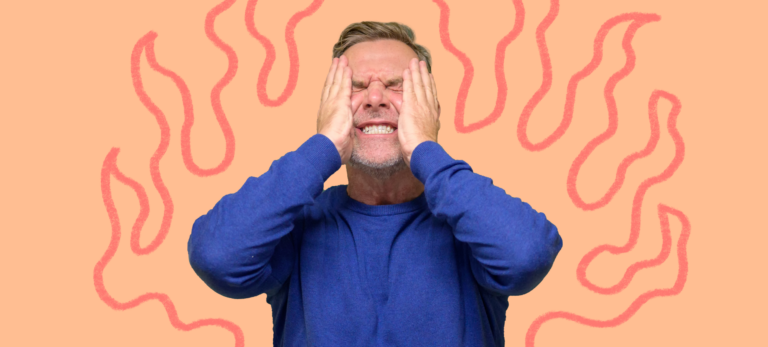


Special education requires its teaching staff to facilitate a positive environment for students with diverse learning needs to learn and grow as individuals. All too often, however, this can come at the cost of high levels of stress and academic and administrative overload, which subsequently results in a higher risk of burnout.
In this article, we address special education teacher burnout: what it is, what causes it, and what its impact is on teachers and the field at large. We follow this up with useful suggestions for how to handle such scenarios in schools in order to prevent and alleviate the symptoms of burnout.
In the demanding world of special education, burnout is an unfortunate and pervasive reality, impacting both staff wellbeing and student success. This free infographic, tailored specifically for current and aspiring special education leaders, presents a crucial resource in the fight against burnout at every level.

Teachers face a multitude of challenges in their work life. One of the most cited is that they have to manage a high workload which requires factoring in many hours of preparation and administrative tasks in addition to the allotted teaching time.
There are, however, challenges that are unique to the subset of teachers working in special education. Among them are a shortage of qualified staff in the talent pool, a lack of adequate support on the job once hired, and inequitable federal funding allocation to special education schools across federal districts, to name a few.
Most importantly, however, the nature of the special education teaching role lies in interacting with and instructing students who have varying degrees of difficulty in engaging with the curriculum and materials they are presented with. This presupposes educators having to deal with emotionally charged situations in the classroom.
As a result of these many pressures, special education teachers (or SETs) have to deal with high amounts of stress and frustration, which is one of several signs of burnout.
According to WebMD, burnout is “a form of exhaustion” which can be a “result of excessive and prolonged emotional, physical, and mental stress”, often related to one’s job.
Staff in the special education sector have been identified as specifically at risk of burning out in the workplace. Researchers have cited some of the SET-specific job responsibilities, such as large amounts of administrative paperwork, the need to work long hours, and the lack of curricular resources, as contributing factors to an already stressful profession.
In more severe cases, special education teacher burnout may even lead to chronic mental and physical health concerns for the individual. This is why it is of the utmost importance that it be addressed in a timely, strategic way.
Special education teacher burnout can also be detrimental to student outcomes.
One 2017 study showed that burnout had a direct impact on student IEP outcomes, with stress significantly reducing teaching quality and student engagement. This is further evidenced by a systematic review that found a correlation between teacher burnout, poor academic achievement, and lowered student motivation.
One of the biggest contributors to teacher attrition is known to be burnout. Over the last three decades, the shortage of qualified teachers who have stayed at their posts has been a persistent issue. Between the 2015-16 and 2016-17 school years, the special education teacher turnover rate was 11% higher than that for general education teachers, with SETs being 72% more likely to transfer schools.
Because of this underlying issue in the sector, there exist long-term implications beyond teacher attrition, as the funds needed to compensate for the staff shortages to recruit, train, and support new teachers have to be diverted away from other departmental budgets where the money is needed, including ones which help address special education teacher burnout.
See what Ori Learning can do for your school or district.
Dive into the research on how SEL programs can help schools navigate the challenges of the teaching profession.

Peer-to-peer support groups which allow for sharing relevant know-how and work experience in a safe environment can significantly alleviate the stress experienced by special education teachers. Learning how to communicate and collaborate effectively with other colleagues is key to understanding the ways in which other people are both similar and different, and it helps foster positive relationships based on empathy. It is also a good idea to have a diverse support system which represents members across all school departments.
Teachers often end up taking on an administrative load outside of regular teaching hours, which reduces the amount of time they can dedicate to preparing for lessons. Finding digital solutions for documentation and reporting can speed up and even automate certain parts of the process of performing time-consuming administrative tasks such as filling out paperwork, recording grades, and conducting assessments. This can in turn significantly reduce a special educator’s workload and potentially mitigate burnout.
Special education teachers who experience burnout may do so because they don’t feel effective or appreciated in the workplace. It is the job of directors and administrators to make time to offer constructive appraisal and provide feedback and recognition on a regular, consistent basis to facilitate higher levels of teacher satisfaction and growth.
Special education teachers experience a high degree of emotional stress on the job as a result of the demanding nature of their roles, including complex student needs, administrative challenges, and the pressure to meet IEP goals.
Common physical symptoms of burnout are fatigue, headaches, and insomnia, while the emotional symptoms typically encompass feelings of incompetence or ineffectiveness, irritability, anxiety, and even depression.
Burnout in teachers can be detrimental to their students’ academic outcomes. At its worst, it can compromise the safety of the learning environment, making teachers become reactive and even lash out at their students verbally or physically.
The long-term success of special education programs hinges on the well-being of the staff dedicated to maintaining them. Once we recognize the negative impact of burnout on special education teachers and the ripple effects it can have across the profession, it becomes imperative to adopt proactive prevention and mitigation measures, such as the ones suggested above. By making SETs’ mental and emotional health a priority, schools not only safeguard their staff’s professional fulfillment, but also enhance the overall effectiveness of special education initiatives.
Ori Learning is a great solution that can alleviate special education burnout by taking on the brunt of the workload. The platform is intuitive and easy to navigate without any additional training necessary. SETs can access a comprehensive curriculum that adapts to different instructional modes, providing them with the flexibility to customize scope and sequence or immediately implement ready-made lessons within the classroom. Moreover, administrative tasks are easier to streamline with Ori as all the data reporting is automated and easily accessible within the platform.
Book a call with one of our representatives today to discuss your school’s requirements and let’s combat special education teacher burnout together.